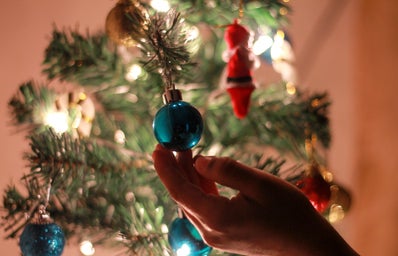Of course there are many holidays celebrated between November and January, but what exactly do those holidays look like? If you’re like me and you’ve grown up celebrating only one or two of these winter holidays, it’s possible you don’t know how others view and celebrate those counterparts.
There’s something beautiful about seeing how other cultures celebrate holidays and produce different traditions than ones you’ve associated with your whole life. For me, I love learning the history and stories behind these different practices. It challenges my thinking and opens me to the world more.
Hopefully this non-comprehensive list of winter traditions can help open the world up a bit for you, too.
Icelandic Book Gifting and Yule Lads
Iceland has several delightful holiday traditions surrounding the Christmas season. One common tradition is the gifting of a book (or many) on Christmas Eve. Icelanders adore books and see the highest publishing rate per capita than any other country, with most sales happening in the two months before Christmas, according to this article. This is called the Christmas book flood, or jólabókaflóð.
I adopted this tradition many years ago with my immediate family and love getting to curl up on Christmas Eve with a new read. Icelanders know what’s up.
There are many other traditions, which you can find here.
In Iceland, they don’t have Santa. They have Yule Lads. Thirteen, to be exact. They’re like little trolls that will give you gifts in your shoes during the thirteen days of Christmas if you’re good or leave rotten potatoes in them if you’re bad. Their parents like to pick on bad children and their mom, Gryla, cooks those on the naughty list.
Like I said, Icelanders know what’s up.
The Night of the Radishes
This festival, starting on December 23rd, lasts three days and is filled with radish and vegetable carving in Oaxaca, Mexico. The carvings are often intricate and are meant to look like the nativity and symbols from Mexican folklore. These detailed carvings are displayed at a massive market that attracts thousands of visitors.
Krampus
Austria uses scary Santa during the holiday season to scare children into being good. If children aren’t good, Krampus will come punish them (or take them away if they’re extra bad). Parts of Germany also use this legend, too.
Definitely a different approach to the Christmas spirit.
The legend of Krampus is broken down here.
KFC?
Kentucky Fried Chicken scores big during the holiday season in Japan. According to this article, it’s customary to eat chicken at Christmas, and KFC Japan really popped off with it’s marketing towards that. Less than 1% of the country’s population identifies as Christian, making Christmas a pretty secular holiday. But KFC launched a campaign that make their brand synonymous with the holiday and boosted their sales.
So while I’ve been eating turkey and ham for years, Japan has been enjoying deep-fried chicken.
Maybe it’s time to take a page from their book.
Mari Lwyd
Here is Wales’ mildly spooky winter tradition of the Grey Mare, a mythological symbol turned Christmas performer.
The ritual includes taking a horse around town, often a skeletal head or someone dressed as the pale figure, and goes door to door with a group singing Welsh songs, or wassails. Sometimes, they will swap rude rhymes with inhabitants. The point is to gain entry into the home, giving the household good luck for the next year.
Catch some more facts and photos here.
Hogmanay
Celebrated on December 31st, Hogmanay is the Scottish celebration of the last day of the year and arrival of the new year. These celebrations are said to be loud and long-lasting, often ending with the song “Auld Lang Syne.”
The origins of this holiday go back to days of Vikings celebrating the winter solstice with parties that went into late December.
Check this page out to see what various parties this year will look like.
La Befana
La Befana, typically portrayed as an ugly witch, is the Santa figure in Italy.
Italians celebrate the Epiphany, a holiday surrounding the visit of the Three Kinds to Baby Jesus. This happens on January 6th and is when good children receive presents from La Befana, the witch who flies down the chimney. If you’re bad, you still get coal, but the usual ‘Santa’ delivery method has been altered.
While wishing “Befana wishes” to Italian women is typically not the best idea, I love the idea of ‘Santa’ being a witch.
Check it out here.
The Yule Goat
During the winter holiday season, Sweden’s tradition of choice is a 40-foot tall straw goat statue.
Yule goats, or Julbock, are built on the first day of Advent and are meant to stay around for all the Yule celebrations, though some face damage or fire.
The origins of this tradition go back to Pagan festivals and it’s theorized that the goat is connected to Thor.
Find out more here.
These are just a few of many unique winter holiday traditions celebrated around the world. I hope to be able to travel and witness as many of these as I can, because I believe that learning about and respecting other cultures is beautiful and necessary to becoming an open-minded, worldly person.



